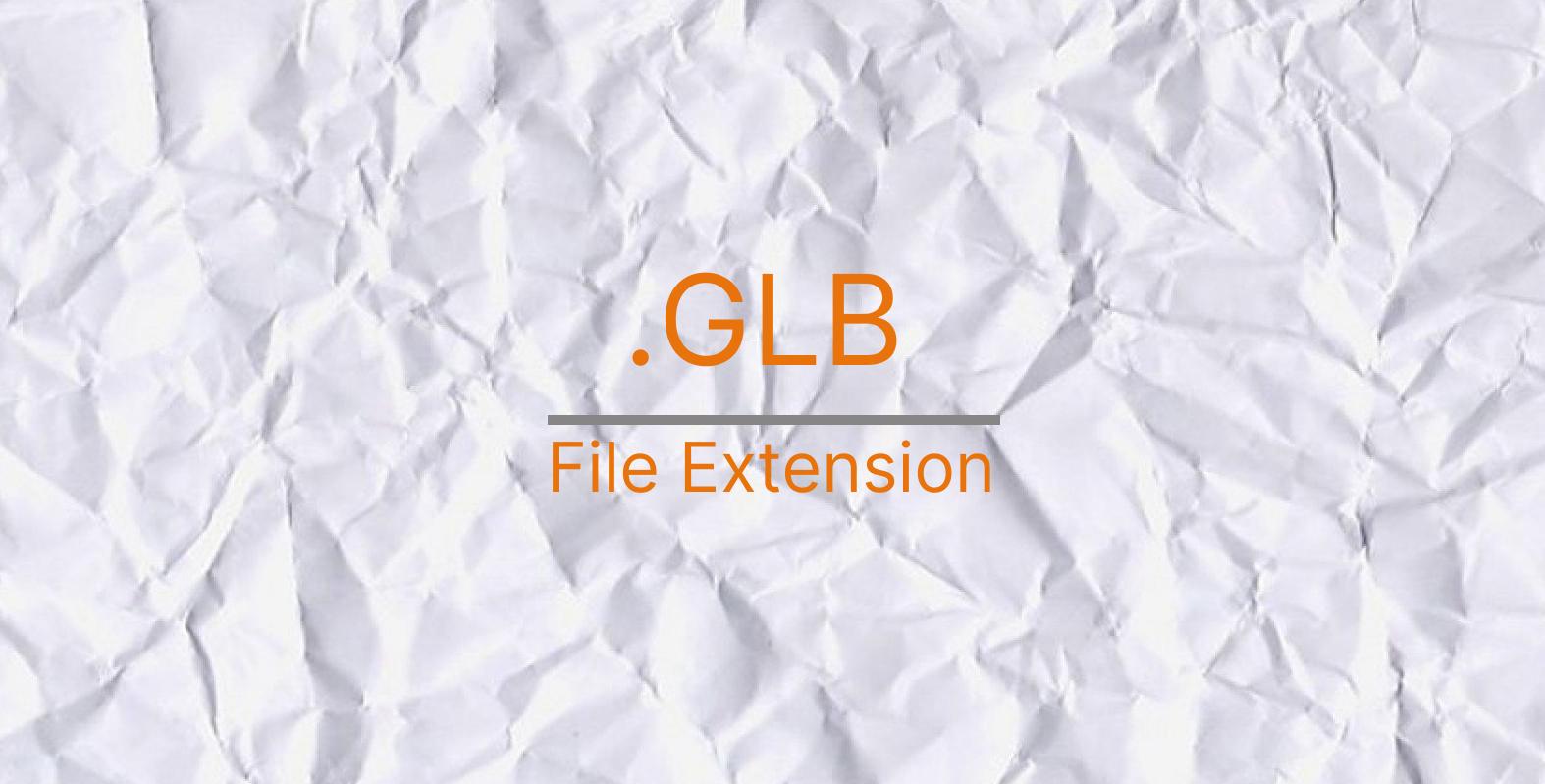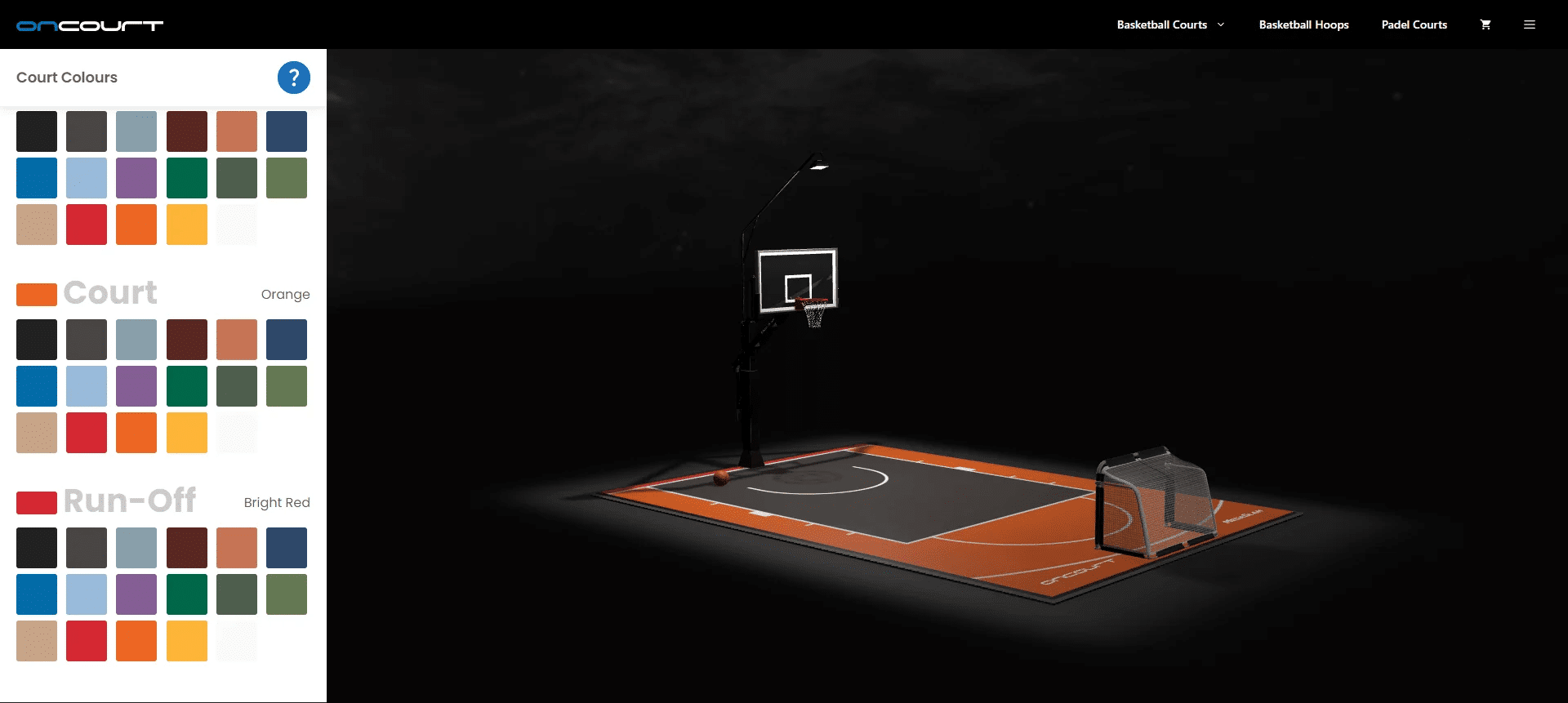GLB File Extension Explained


3D elements are a guaranteed way to improve the look of your designs and create unique user experiences. Whether you’re working on a product website, telling a story through visuals, or creating an interactive report with lots of data, 3D elements can help.
Web creators can use pre-existing 3D files or create their own using various software tools. Even though they may look complicated, with the proper knowledge and techniques, anyone can make a striking visual. However, remember that large file sizes are the norm when it comes to 3D elements, which will cause your page to load slowly and decrease overall website performance.
GLB files are a valuable tool for web designers. They’re convenient when you need to work with app icons, but they can also be used for other purposes. That’s where this particular 3D file format comes in handy. Here’s what you need to know about using our favorite 3D file type, from where to get GLB files to how to optimize them for your website project.
What is a GLB File?
GLB is a 3D file format commonly used in Virtual Reality (VR), Augmented Reality (AR), games, and web applications because it can support motion and animation without sacrificing quality. One of the advantages of this format is its small size- meaning faster load times for users.
GL Transmission Format (glTF) files are a binary version of the GL Transmission Format (glTF) file, which uses JSON (JavaScript Object Notation) encoding. As a result, supporting data such as textures, shaders, and geometry/animation are all contained in a single file.
In 2015, the Khronos Group established the GLB and glTF formats. They recognized a need for formats developers could utilize in many 3D and 2D applications. Version 2.0 of the guideline (published in 2017), which included Physically Based Rendering (PBR), made shadows and light appear more realistic and coded improvements for speed and animation functionality.
The GLB format, like glTF, is a royalty-free method of encoding 3D data. The size of a GLB file format will be less (about 33 per cent) than that of a glTF file and all related files. It’s also easier to send one file to a server than many, giving GLB an advantage. Many developers find it simpler to modify the items and senses in the glTF format before converting them to GLB to deliver the file.
Popular uses for GLB Files
GLB files are helpful in situations that need animation and motion, such as when there is a demand for interactivity. Those instances include:
- Game designers may save their work as GLB files.
- On interactive websites and advertisements, the GLB format allows users to manipulate displayed items, such as a sofa that may be rotated and viewed from all angles.
- AR and VR developers can save their progress as digital files.
Other File Formats that Use the GLB Extension
In addition to the binary version of glTF, a few files share the GLB extension. These are:
- The Glulx Blorb file format makes it easy to bundle all the game resources you need, including graphics, level data, music and more. Initially designed for text-based games, it worked just as well for graphical games.
- The STK Globe File format is utilized in space and defense system simulations, intelligence analysis, satellite operations, and aircraft design. This file type stores information on a simulated globe specifically for the application STK (Systems Tool Kit).
- Glanda Button: Glanda is a program that generates Flash objects. It can create a button, also known as SwfEasy.button., a component type.
- Global Module in BASIC: The 1960s saw the creation of BASIC, a coding language. Modules are pieces of code, and you can reuse global modules. GLO is sometimes used in place of GLB.
GLB format vs. glTF format: What’s the difference?
While glTF files are not as standard as their GLB format counterparts, they are still used for static models, moving scenes, and animations. GlTF files have myriad uses, including VR and AR applications, games, web apps, and 3D advertisements.
They might also be used in Microsoft Word and PowerPoint documents. While glTF files are similar to the GLB format, they differ in meaningful ways. The binary version of glTF files, which uses a JSON-encoded structure, is known as GLB. That makes sense to a software or web developer, so this is the most straightforward way to explain the distinction:
- glTF files Game developers can use game engines, such as Unreal 4 and Unity 5, to load glTF files directly into the game’s code. Game data, including textures, geometry, animation data, etc., may be loaded from external files. Because of this external storage requirement for glTF files must be processed in an external format like JPEG for textures, BIN for animation data, etc.
- GLB files. It’s unnecessary to store all supporting data externally in a single file, so you won’t need external support files to access textures, geometry, shaders, animation, and other types of data relevant to a 3D visual.
How to open a GLB file
To open a GLB file, you’ll need a suitable program, such as Paint 3D. Next, you will get a Windows message “How do you want to open this file?” “Windows can’t open this file” or a similar Mac/iPhone/Android warning if you don’t have the correct software. If your GLB file format doesn’t open correctly, try right-clicking or long-pressing it instead of double-clicking.
To do so, go to the top of the document window and click “Open with,” then pick an application. You may also right-click a GLB file and select “Open in” from the drop-down menu. Then, drag the file into this browser window and drop it.
How to convert a GLB file
glTF optimizers can be used to convert glTF files into GLB. There are numerous programs and online tools that do conversions in both directions, as well as file conversions from 1.0 to 2.0. Some convert 1.0 glTF files to 1.0 GLB, while others will perform conversions during file load time.
If you have a glTF file, convert it to a GLB file. If not, use programs like BlackThread.io that can convert other formats into GLB; standard compatible formats include 3MF, AMF, and FBX. OBJ and MTL, glTF Collada PCD PLY JSON STL, among others.
To explore more file conversion options, visit File-Extensions.org and enter GLB into the converter page. Doing so will reveal a list of compatible applications or websites.
How to Convert a GLB File to STL
There is no way to convert a GLB file to an STL, though you can convert an STL into a GLB.
How to Convert a GLB File to OBJ
As of now, it is impossible to transform a GLB file into an OBJ file. However, you can convert a GLB file to an OBJ file. Get more information about what you may accomplish with OBJ files.
Advantages of using the GLB file format
However, there are some clear advantages to using the glTF format over GLB, which make them an ideal choice for incorporating 3D designs into your website:
Small file size: GLB files are usually 33% smaller than glTF and its supplementary files. Consequently, GLB files use less processing power, making them more straightforward to transfer and quicker to load and process– – great for mobile and web-based 3D modeling apps.
All-in-one file format: Glb files may become an even more popular format than they are now because of their ease of use in uploading and managing multiple 3D files. GLB files can be more efficient in uploading a single binary file to a server than many individual files, which may be time-consuming and difficult.
Instant interaction: GLB files have three main advantages: they are textured, include animation information, and come with a PBR shader. That means you can open the file and see all the elements immediately without going through any extra steps.
The bottom line
The GLB file extension is the binary version of a glTF file. It contains all the information you need for a 3D model, including textures, geometry, shaders, animations, etc. The format is designed to be an efficient way to transfer and load 3D data.
If you have a glTF file, you can convert it to a GLB file. If not, use programs like BlackThread.io that can convert other formats into GLB; standard compatible formats include 3MF, AMF, and FBX. OBJ and MTL, among others.
Looking for an easy way to use GLB files in your next web project? Check out Vev! Our pre-coded 3D Model Viewer and 3D object elements make it easy to start. Just upload your GLB files or select files from popular libraries, and play around with placement and behavior on a tactile, visual canvas.
we reply in 1 day










